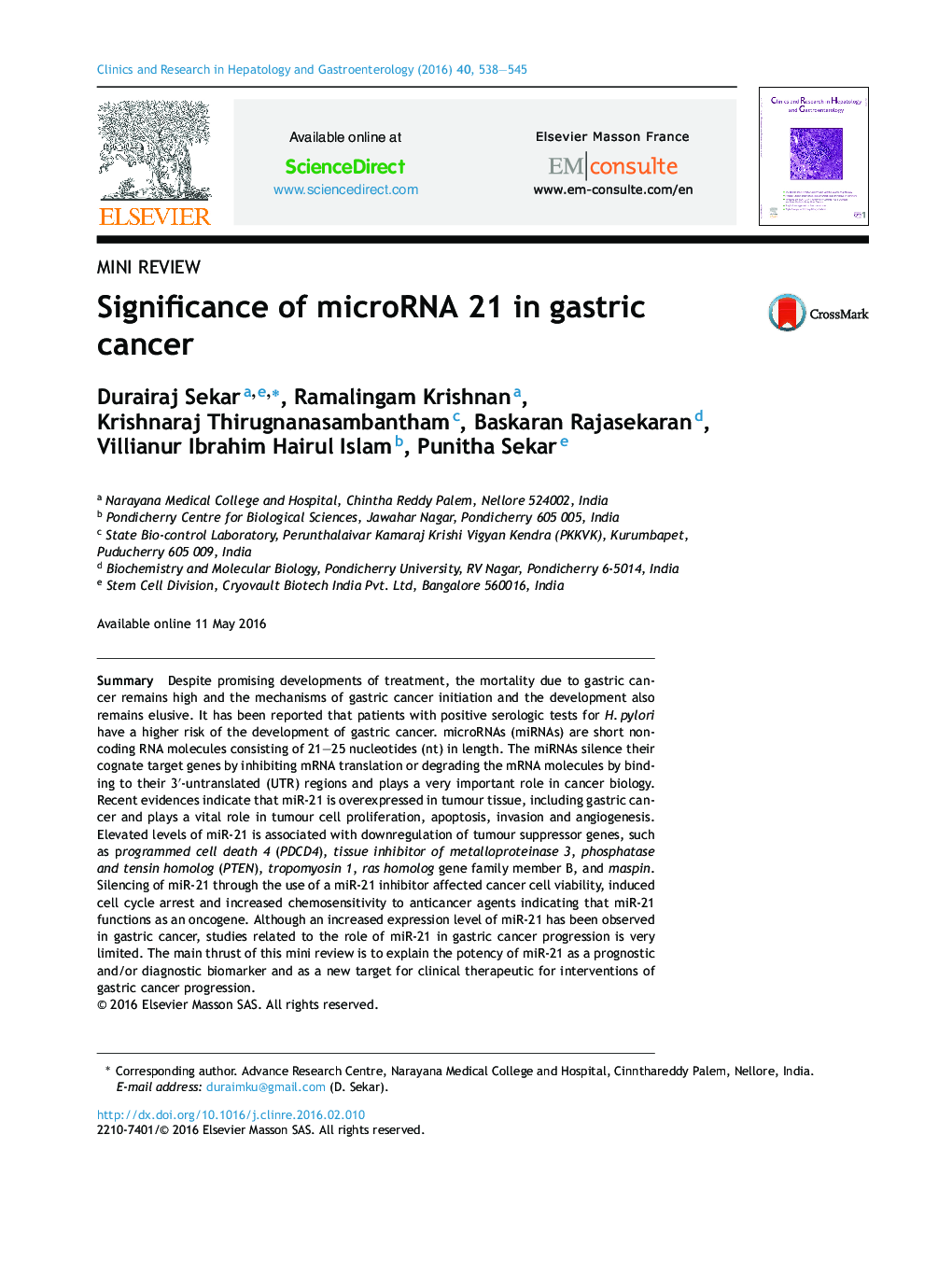| Article ID | Journal | Published Year | Pages | File Type |
|---|---|---|---|---|
| 5657759 | Clinics and Research in Hepatology and Gastroenterology | 2016 | 8 Pages |
SummaryDespite promising developments of treatment, the mortality due to gastric cancer remains high and the mechanisms of gastric cancer initiation and the development also remains elusive. It has been reported that patients with positive serologic tests for H. pylori have a higher risk of the development of gastric cancer. microRNAs (miRNAs) are short non-coding RNA molecules consisting of 21-25 nucleotides (nt) in length. The miRNAs silence their cognate target genes by inhibiting mRNA translation or degrading the mRNA molecules by binding to their 3â²-untranslated (UTR) regions and plays a very important role in cancer biology. Recent evidences indicate that miR-21 is overexpressed in tumour tissue, including gastric cancer and plays a vital role in tumour cell proliferation, apoptosis, invasion and angiogenesis. Elevated levels of miR-21 is associated with downregulation of tumour suppressor genes, such as programmed cell death 4 (PDCD4), tissue inhibitor of metalloproteinase 3, phosphatase and tensin homolog (PTEN), tropomyosin 1, ras homolog gene family member B, and maspin. Silencing of miR-21 through the use of a miR-21 inhibitor affected cancer cell viability, induced cell cycle arrest and increased chemosensitivity to anticancer agents indicating that miR-21 functions as an oncogene. Although an increased expression level of miR-21 has been observed in gastric cancer, studies related to the role of miR-21 in gastric cancer progression is very limited. The main thrust of this mini review is to explain the potency of miR-21 as a prognostic and/or diagnostic biomarker and as a new target for clinical therapeutic for interventions of gastric cancer progression.
